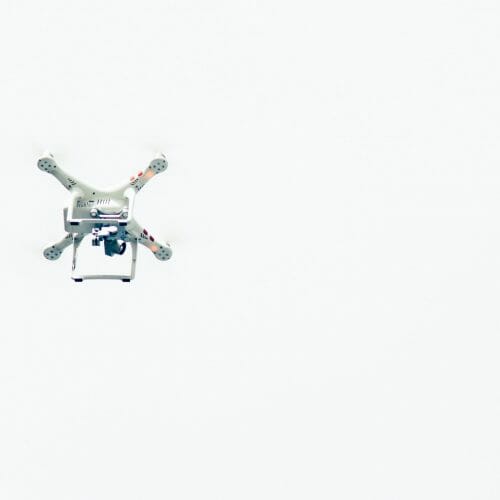Drones in construction zones
Projects are called projects for a reason. They can take a long time to complete and have many different factors in them. Since the beginning of projects as we know them, people have been looking for new ways to cut the cost, timeframe and improve the end product. Engineering is no different, and indeed an integral part of ensuring that the project is designed, optimised and delivered.
Take the development of a new dam for example, once designed you have to survey, map and continuously monitor ground conditions, the structure and building process – providing data that takes a lot of time and coordination to collate. Such projects are often in difficult or even dangerous terrain, and accurate design and construction requires a birds–eye view or could benefit from work outside of usual manual construction hours. So, it is no surprise that drones are steadily becoming essential on construction sites and a time saver for developers.
Considering their expensive, amateur and unreliable beginnings drones have seen rapid growth in recent years. They will soon be bringing us our deliveries, looking after our crops and assisting the police. The construction industry, however, maybe the industry that benefits most from drones as they offer faster and more reliable options across a broader spectrum.
So just what can drones do for a development you ask?
Currently, drones can produce accurate land surveys, collect and report data as well as detect wells, pipes or weak spots in the ground – they have even been known to detect gold and diamonds! Drones can offer significant advantages in health & safety by reducing the need for scaffolding and temporary access routes.
Drones are just as useful after construction too; they can detect cracks and imperfections in finished projects, they can do immediate stock takes and by using Building Information Modelling they can accurately ensure projects are built exactly as designed – something that rarely happens using conventional methods. Of course, these are all things that would traditionally take a lot of time and result in errors.
WSP in the Middle East has used drones for documenting progress on projects like Ain Dubai and to inspect facades on huge buildings such as the Atlantis – both processes that would have usually taken experts hours of time whilst navigating challenging access requirements.
We are still only getting to know drones, and in a lot of ways, we aren’t ready for what they can practically do for us.
It’s not unrealistic to anticipate a future of tools and materials being transported around sites by drones, or, one day, replacing cranes altogether. This would save time and money for investors, be safer and easier for construction workers and ultimately enable us to continuously ensure our built environment is safe and secure. But to get there, we must prepare for it now.
It’s not unrealistic to anticipate a future of tools and materials being transported around sites by drones, or, one day, replacing cranes altogether. This would save time and money for investors, be safer and easier for construction workers and ultimately enable us to continuously ensure our built environment is safe and secure. But to get there, we must prepare for it now.
Currently, in the Middle East, it’s not as simple as buying a drone from the local mall and turning up to a building site.
Legislation can be a significant stumbling block for all sectors. Worries over privacy, security and safety often mean the use of drones is tightly licenced and in many cases you can’t use a drone at all, therefore leaving us behind the rest of the world who are thriving on and off-site thanks to ever-improving technology.
To be ready for the future is to anticipate the future. We can expect that automation in all forms will become a part of our everyday lives – if we lay the groundwork for it now we will give ourselves the best chance to thrive in the extraordinary era.



